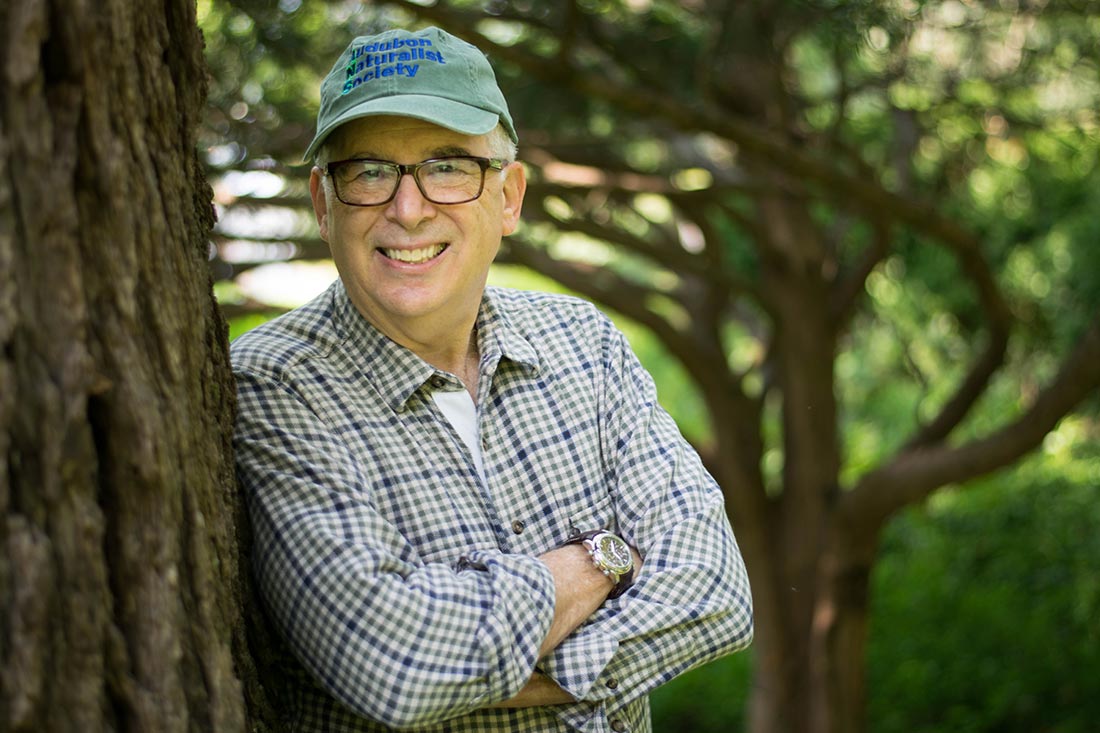LAURENCE WISEMAN formed CenterLine Strategy after a 29-year career as founding president and CEO of American Forest Foundation. In 2010, he was given the Legacy Award from the Arbor Day Foundation, for career achievement in forestry. That same year, he began a consulting practice providing strategy and organizational development services to government agencies, companies, nonprofits and foundations on matters related to environment, natural resources and sustainability. He’s lectured frequently at leading universities and served as Chair of the National Urban and Community Forestry Advisory Council.

What led you to want to work in urban forestry?
I spent about 30 years working in rural forestry — basically working to get better stewardship on family-owned forests. About 4 million families own most of the woodlands in the U.S. And, many are very special people. They care about their woodlands, but even more they understand all the benefits that trees bring to wildlife, the environment and, most of all, people. They’re passionate about that. And, that passion is infectious. So, when I left my previous job, I figured I’d find that same level of passion among the folks in urban forestry. I was right. And, I’ve been involved ever since.
Why did you want the National Association of Regional Councils (NARC) to get involved with the Vibrant Cities Lab?
Every community that embraces urban forestry begins with a plan. Or, if they don’t, they should. Plans at the neighborhood, local and regional level dictate the kind of environment we’ll live in — for better or worse. A tree might grow in Brooklyn, N.Y., but thousands of trees can’t thrive without engaging dozens of policymakers and advocates in figuring out what, where and, most importantly, why trees should be planted.
NARC brings together and serves as a “knowledge hub” for most of the nation’s metropolitan planning organizations. Every one of these communities brings different concerns to the table. NARC is committed to helping them make urban forestry part of the solution to their economic, environmental and social issues.
What was your favorite aspect of your job?
The look on people’s faces when they finally understand all the things trees can do for their community. For them, it’s a “jeez, I didn’t know that” moment; for me, it’s the sound of progress.
What was the most difficult moment or encounter that you experienced in pursuit of your work?
It happens so often, I’m used to it. When asked in a social setting what “I do” , it’s usually less than a half minute before they make excuses and walk off to find somebody “more important.” People need to be educated; unfortunately, I generally need more than 30 seconds.
What do you think is the biggest issue facing urban forestry today?
There’s so much new research being published and new urban forestry practices tested. It seems the pool of knowledge is overflowing. But, we need to find better ways to put this information in the hands of people who can use it. That’s why American Forests and NARC teamed up with the U.S. Forest Service to create the Vibrant Cities Lab.
Who is your favorite fictional scientist and why?
Real scientists are so much more interesting than fictional ones. My favorite was actually a mathematician, John Kemeny. He was a renaissance man: he invented the nation’s first distributed computing system in the ‘60s and a programming protocol for non-professionals; he became president of my college. The only thing I know he failed at was teaching me calculus.
If you weren’t in the field of forestry, what would you be doing? Why?
If I didn’t find my work fulfilling — and fun — I wouldn’t be doing it. Hence, I’ve not really given this much thought. At the beginning of my career, I was a television writer and documentary producer until I discovered that, behind the camera, I could only record what other people were doing. “Doing” seemed more satisfying than observing. So, I moved on, found the right fit and stayed for nearly four decades.
Where is your favorite spot to experience nature and why?
Woodend, a 40-acre nature preserve literally inside the Beltway near where I grew up. It’s owned and managed by the Audubon Naturalist Society, founded 120 years ago . Not only are they magnificent stewards of their land, they have deep roots in the area. Both Rachel Carson and Theodore Roosevelt were former board members.
What is the most surprising thing that you have learned or discovered?
It’s not surprising, but it did influence my career: that there are no environmental issues that are truly black and white. There are no pure heroes, and no unalloyed villains. Pointless confrontation is just that. It spawns endless lawsuits, vituperative name-calling but no solutions. For that to happen, everyone needs to listen, to understand other peoples’ motives and dare to explore middle ground.
Do you have a favorite story from your years in the field? (working with Conservation organizations?)
I’ve had some singular moments, but few worth preserving in print. One true story, generally told after three or four beers, involved a young canvasser who ambushed me on my way to the gym. He asked whether I “had a moment to spare for the environment.” I pointed out that I had already spent about 25 years working for the environment, and turned to walk away. “But wait,” he shouted, “don’t you know that some lady named Kimberly Clark is cutting down all of Canada’s forests.”